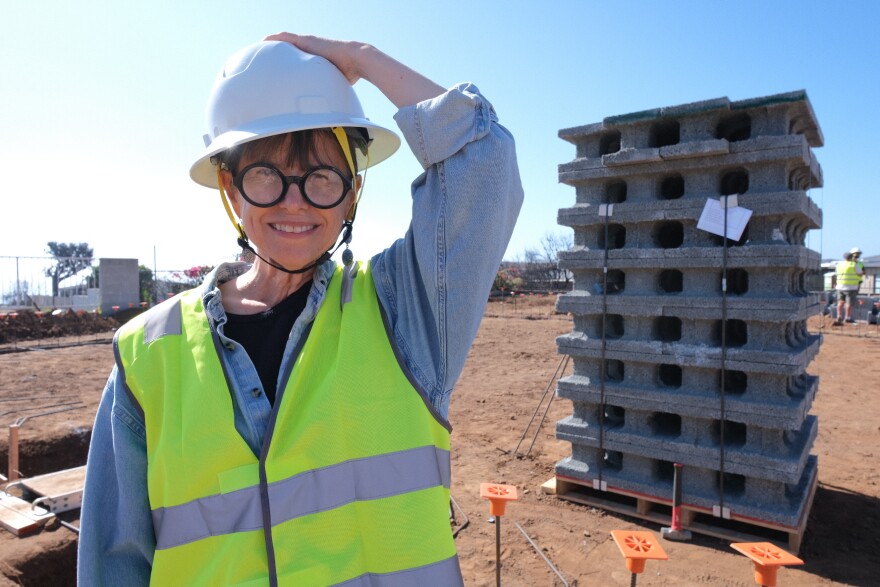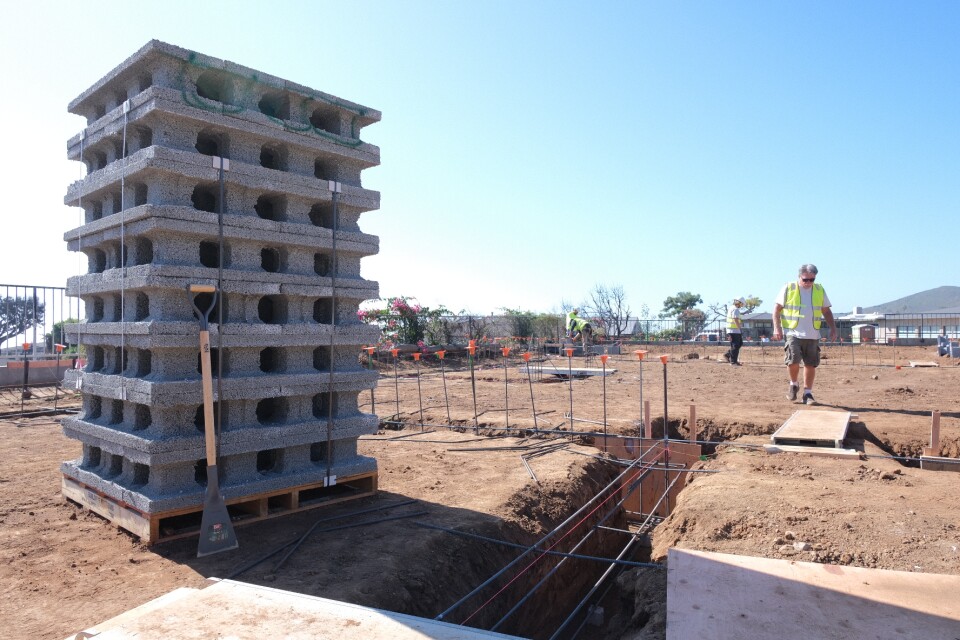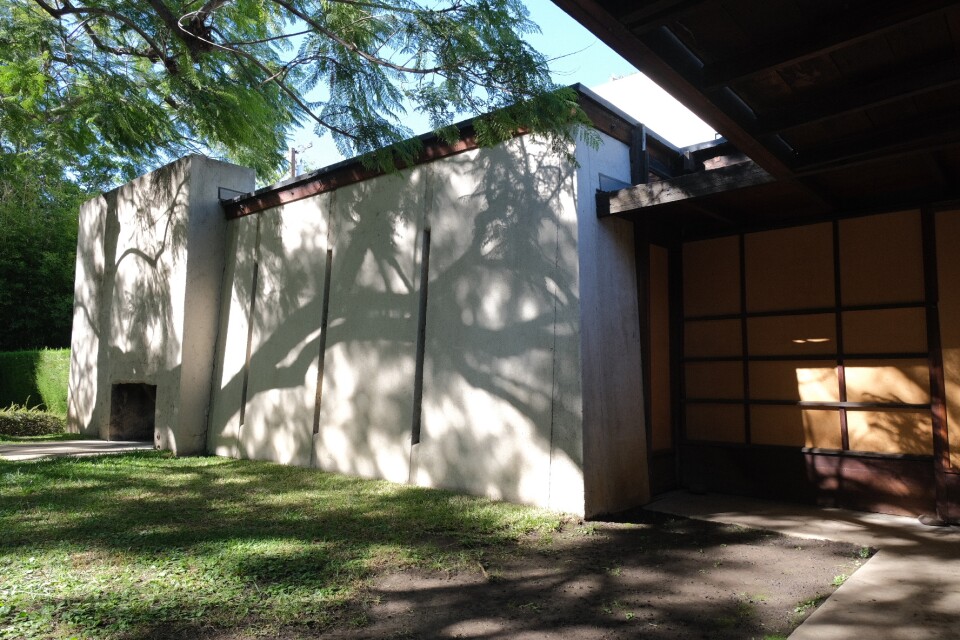Truth matters. Community matters. Your support makes both possible. LAist is one of the few places where news remains independent and free from political and corporate influence. Stand up for truth and for LAist. Make your year-end tax-deductible gift now.
Why some homeowners rebuilding from the Palisades Fire are choosing concrete

As rebuilding from the Palisades and Eaton fires gets under way, some homeowners are choosing to build differently. Instead of the usual wood framing, they’re working with a material typically associated with freeways and skyscrapers: concrete.
Only 7% of homes nationwide are currently built with concrete, according to the National Association of Home Builders. But experts say this hardy, non-combustible material could become more popular in areas with high fire risk, such as the Los Angeles County neighborhoods where thousands of homes were destroyed in January 2025.
While concrete doesn’t make a home totally fire-proof, insurance companies are recognizing its safety benefits by offering homeowners lower premiums. While cost has been a barrier in the past, some homeowners say the expense of concrete now compares favorably with wood.
One recent morning on the Sunset Mesa lot where her home burned down, Karen Martinez adjusted her hard hat and flipped through the blueprints for her new home.
“These are my original chicken scratch drawings, which I love doing,” Martinez said.
Martinez has overseen the building process for many of her previous homes. But this will be her first project using concrete blocks. Technically called insulating composite concrete forms, the bulky gray blocks stacked all over her property are lighter than they appear.
“It's about 87% polystyrene and 13% cement,” said Martinez, who is soft-spoken and self-described as “nutty” about building materials.
“Basically they're non-combustible. So in a fire, you're pretty much safe from the walls burning,” she said.

‘There are better ways to build’
It didn’t take long for Martinez to choose this material after her old wood-framed home was lost in the Palisades Fire.
“It was just probably a day or two of shock,” she said. “When I finally started thinking about, OK, I have to rebuild, obviously, I'm going to be building with something that's non-combustible.”
Martinez said there are other benefits beyond fire safety: she said the material can withstand earthquakes, and it won’t get termites because it contains no wood.
Martinez saw the need to do things differently. The hardest part, she said, was getting others on board. Securing permits from L.A. County, talking her architect into using this kind of concrete, even helping her neighbors with plans for their own concrete homes.
It all took some convincing.
“Most architects and contractors don't know how to use it,” Martinez said. “All they know is wood and maybe steel. It's hard to convince people to change their ways. That's my goal. I'm trying to just educate people and say that there are better ways to build.”
Some insurance companies agree. Victor Joseph, president and chief operating officer of Mercury Insurance, said his company is offering discounts to those who rebuild with fire resistant materials.
“What we're incentivizing with these types of discounts is really some combination of steel, concrete and glass,” Joseph said.
He said homeowners can get up to 50% off the wildfire portion of their premium by rebuilding with materials like concrete.

“In high wildfire areas, that results in a pretty substantial discount,” he said.
Concrete alone doesn’t fire-proof a home
Concrete blocks have been used for decades to build homes in other countries, but they are still an unusual building material in Southern California homes.
Tom Tietz, executive director of the California Nevada Cement Association, said growing awareness of fire risk could help the blocks catch on with more homeowners.
“There's clearly a desire from folks that have lost their homes to make sure that never happens again,” Tietz said.
Concrete homes aren’t automatically fire proof. Embers can still fly in through vents or windows. Steve Hawks, senior director for wildfire with the Insurance Institute for Business & Home Safety, said even concrete homes need strong sealing.
“The structure is only as good as the weakest link,” Hawks said. “If you only address the siding material and don't address the window and the vents and the other components, you still leave the home very vulnerable to these significant, intense wildfires.”
Learning from L.A.’s concrete home history
Though rarely used in single-family homes, concrete does have a long history in Southern California architecture.
Architect R.M. Schindler built L.A.’s first modernist home in 1922 using concrete slabs poured on site and tilted up to form monolithic walls.

“I think there's a perceived kind of coldness with concrete,” said Maeve Atkinson, education and engagement manager for the Schindler House through the MAK Center for Art and Architecture.
Atkinson said Schindler wanted to use new materials to build a new kind of home, one that was open to the outdoors and designed for not one, but two couples.
“It was about living differently,” Atkinson said. “It was about being much more in tune with the elements and with nature.”
Schindler decided to leave the raw concrete exposed. Its grooves and cracks remain visible, contrasting with the redwood beams that form the rest of the building’s open structure.
Homeowners recovering from January’s fires don’t need to go raw and radical like Schindler. Martinez said her home, covered with stucco, will look much like any other modern L.A. home.
“I'm hoping that this will actually become the future of building,” she said. “I think it's a much, much better way to build, and it's not more expensive. I think actually everybody should be doing it.”
If all goes according to plan, she said, her home should be done before the two year anniversary of the Palisades Fire — and ready to take on whatever comes next.














